Week 8: The Body
As we want to explore beyond the basic ties, we become more aware that the rope is just a tool, and the focus in rope bondage really is the people involved. Our bodies are composed of different systems that work together and enable us to explore the world. We share common anatomy and each body is unique at the same time. A big part of rope bondage is about exploring new places with our bodies with the help of the rope. A deep understanding of anatomy will help with a better mitigation of rope bondage risks and allow us to go deeper in our exploration.
The goal of this week is to tap into the science of the body to get a better understanding of human anatomy, the possibilities and discover what makes us unique.
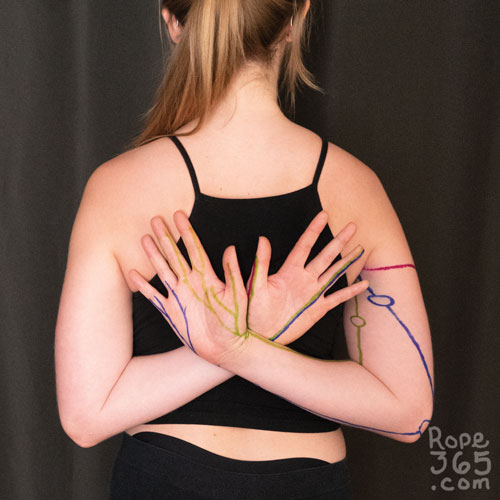 Day 50: Upper Limb Nerves – Draw the location of the upper body nerves with a marker pen and try a few different ties to see which nerves can be impacted. Day 50: Upper Limb Nerves – Draw the location of the upper body nerves with a marker pen and try a few different ties to see which nerves can be impacted. |
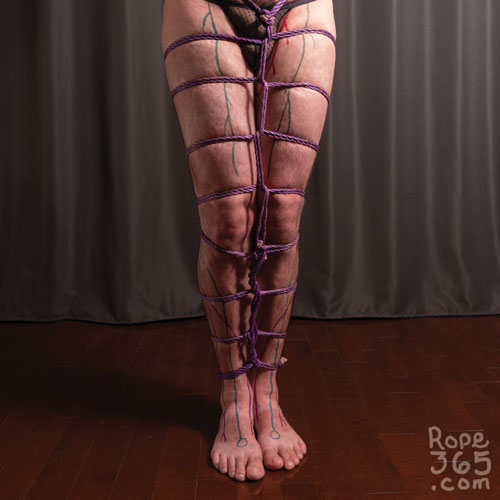 Day 51: Lower Body Nerves – Learn the different nerves in the hips and the legs and draw them on the body. Try different ties and analyze how they can impact the nerves. Day 51: Lower Body Nerves – Learn the different nerves in the hips and the legs and draw them on the body. Try different ties and analyze how they can impact the nerves. |
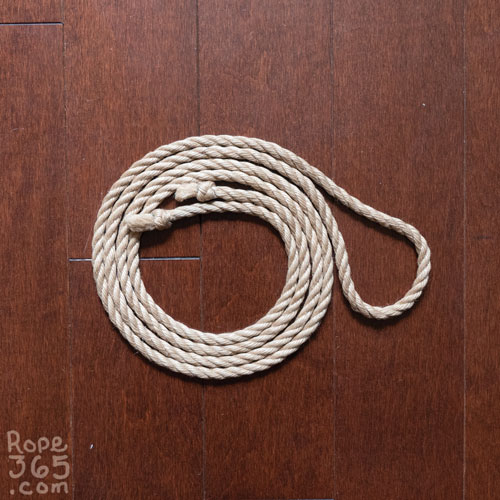 Day 52: Touch and Pressure Points – Make a chart of the skin sensitivity on the body by touching each part of the body and scoring the sensitivity on a scale. Create a tie that uses this information to target the most sensitive or least sensitive areas. Study the location of the different pressure points as documented in many martial arts. Create a tie that makes use of this information. Aim or avoid the pressure points depending on your preferences. Day 52: Touch and Pressure Points – Make a chart of the skin sensitivity on the body by touching each part of the body and scoring the sensitivity on a scale. Create a tie that uses this information to target the most sensitive or least sensitive areas. Study the location of the different pressure points as documented in many martial arts. Create a tie that makes use of this information. Aim or avoid the pressure points depending on your preferences. |
 Day 53: Upper Limbs Mobility – Explore the range of movement of the arms. Compare how each joint moves depending on the direction. Create a warm-up and stretching routine to protect your shoulders. Try different arm positions and analyze how these can be leveraged in a tie. Day 53: Upper Limbs Mobility – Explore the range of movement of the arms. Compare how each joint moves depending on the direction. Create a warm-up and stretching routine to protect your shoulders. Try different arm positions and analyze how these can be leveraged in a tie. |
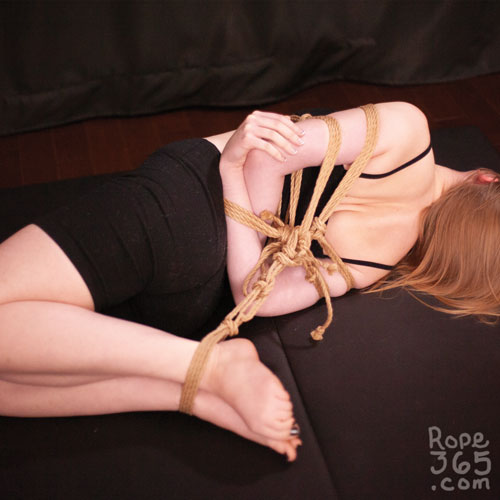 Day 54: Spine and Lower Body Mobility – Get a deeper understanding of the spine and lower body and how it can move. Learn how to protect joints during movement and explore how to play with the mechanics of the body to create complete restriction. Day 54: Spine and Lower Body Mobility – Get a deeper understanding of the spine and lower body and how it can move. Learn how to protect joints during movement and explore how to play with the mechanics of the body to create complete restriction. |
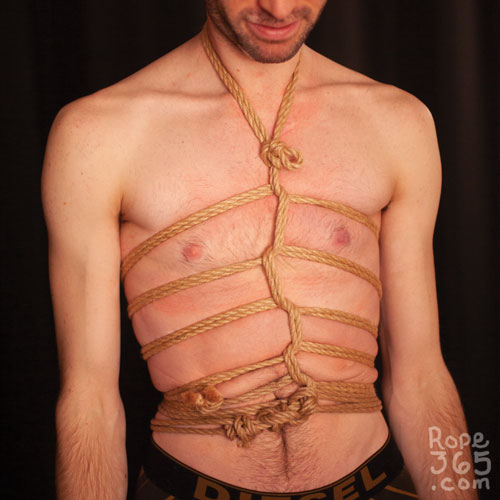 Day 55: Torso and Breathing – Study the structure of the chest in the chest. Use rope to play compression in different locations to explore different types of breathing. Day 55: Torso and Breathing – Study the structure of the chest in the chest. Use rope to play compression in different locations to explore different types of breathing. |
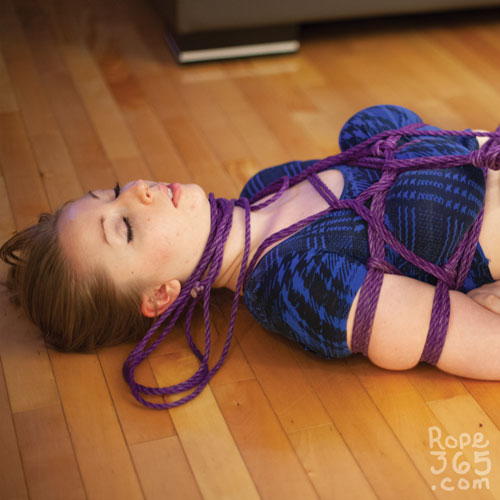 Day 56: Neck – Study the anatomy of the neck, how the airways are built, where are the main veins and arteries. Gently play with the rope on the neck to see how pressure feels on the different parts of the neck. Day 56: Neck – Study the anatomy of the neck, how the airways are built, where are the main veins and arteries. Gently play with the rope on the neck to see how pressure feels on the different parts of the neck. |

2020-08-24 at 8:04 AM
Hello,
Do you have any idea when the week 8 section on the body will be available ? I look forward to learn more in order to tie more safely and avoid injuries.
Thank you for this website, such a good reference.
2020-08-24 at 6:49 PM
The first part about upper body nerve is in a good place, I think I’ll be able to post before the end of the month. The rest is more complicated because it is difficult to take pictures in the pandemic. Hopefully in the upcoming months.
2023-02-05 at 10:16 AM
I guess it’s there now 😀 Hope you enjoy!